
Hello and welcome to this week's piece.
If you’d like to support me, do please think about a monthly or yearly subscription.
If it isn't possible please do consider
There was a frisson of detectable excitement at Wild Country Organics stall at the weekend farmers market. Cime di Rape and punterelle had arrived, the first week at market, and customers were gathering round, either to buy it or to speculate on what the curious vegetable from outer space could be. It’s bitter I told a woman, but a good bitter. Better to be forewarned. Punteralle is cut in thin longitudinal slices, put in cold water where they curl up. It’s eaten raw as a salad, or quickly cooked with oil, garlic and crushed anchovies. In Italy you’ll find it in markets, ready prepared in bags.
From December into January, I start turning away from the myriad and inevitable Christmas biscuit and cookie posts. As much as I love a good biscuit now and again, there are limits. In the winter I find that I crave bitter over sweet. Cheese board before pudding. I can’t find bitter leaves in my neighbourhood. I have to seek them out at farmers markets, or specialist grocers at specialist prices. My body craves bitter. So for me, they’re worth looking for.
The chicory family hosts myriad flavours, colours, shapes and sizes, and ranges from mild to extreme on the bitter scale.
Some varieties including chicory are ‘forced’, grown quickly in darkness, and harvested after only a few weeks; and, confusingly whilst in the UK we call the compact club-shaped leaves chicory, Cichorium Endivia is known as endive in much of Europe, a name that in Britain usually refers to a variety of curly lettuce. Or witloof in Belgium, and it was the Belgians who developed the idea of forcing the roots in darkness to form the yellow edged chicons.
The chicory family all stems from the parent plant, Cichorium intybus otherwise known as blue dandelion. It’s the roots of this plant that are used as a coffee substitute and it’s still common to see it mixed with coffee in parts of the world including France and in New Orleans. Who remembers bottles of chicory essence?
It’s a big botanical family. Dandelion, endive, the pretty paint splattered leaves of Cichorium intybus, Castelfranco; palla rossa chioggia, friars beard, escarole, frisée, puntarelle, sugarloaf, rossa di Treviso, and rossa di Treviso Tardiva, grown in Treviso in the Veneto region, which has the coldest winters in Italy, where these radicchios need the cold to mature and sweeten them. Punterelle is the name given to asparagus chicory, cicoria asparagio or cicoria di Catalonia.
The parent plant has a long and venerable history. It is one of the earliest cited in recorded literature by Horace, a leading Roman poet, at the time of Augustus, 1st emperor of the Roman empire. Roasted chicory root has been eaten since the middle ages. The root was worn as a protective amulet to ward off magic spells. It is one of the bitter herbs of the Jewish Passover and is said to be able to render the bearer invisible whenever they wish.
In pre-Celtic times chicory was a highly revered sacred plant regarded as the plant embodiment of the vegetation goddess, the daughter of Mother Earth.
Since chicory opened its flowers only between five and eleven in the morning, Carl von Linné (1707 – 1778) included it in the Floral Clock which he had established in the Botanical Garden at Uppsala.
Why do some of us crave bitter? When we're children our responses to bitter are more pronounced to guard against toxins. As we grow up we learn that not all bitter foods are poisonous. Some are enjoyable. Some contain compounds that are good for us. We learn to love bitter lemon, bitter melon, coffee, hoppy beers, olives, grapefruit, tonic water, campari, marmalade, dark chocolate. Whilst some of us embrace bitter, others run away from it.
I remember wanting to make myself like black olives because they were advertised as being sophisticated. We need bitter to balance other flavours in our palates. A bitter scale is personal to each of us. One of the growers I work with won't touch the cime di rape we plant, it's too bitter for her. To me the flavour has a mild bitterness. Manufacturers think we want sweet. Grapefruit is a case in point. The regular yellow fruits I grew up with, often served with half a glace cherry on top are unpopular compared to milder and sweeter pink or red varieties. The bitterness has been bred out.
Bitter can be challenging. If you're a beginner, start with chicory (witloof), or castelfranco; they’re mild in comparison with the beefier bitterness of some of the family. The long stemmed dandelion types, Chicory Catalogna are to my taste buds at the bitterest end of the scale, but bitterness can be toned down by cooking.
Pale green chicory and Palla Rossa radicchio are the varieties you’re most likely to find at stores and markets. These are sturdy enough to take heat as well as being a winter salad ingredient bringing joy, freshness and a hit of colour. Make a risotto with radicchio, braise chicory. You’ll lose the colour, but the taste will remain.
Stir fry cime di rapa, use to replace your favourite winter greens, or serve it in the traditional Italian way, with garlic, chopped anchovy fillets and chilies. I’m cheating here; Cime di rapa is a member of the mustard family not a chicory but its soft bitterness allowed it entry into this piece.
My favourite simple winter salad; ripe slices of pear, soft blue cheese, walnuts and radicchio or chicory. Or variations thereof. Hazelnuts, goats cheese, English russet apples. Blood orange and chestnuts. The chicory family love strong flavours; cheese, anchovy, bacon, and they’re the perfect pairing for winter citrus from lemon and lime to blood oranges and clementines.
Bitter is an accomplishment. It takes training to adjust, worth the initial struggle; a similar challenge to learning to leave behind milk chocolate and embrace the dark side. Even now whilst I’m writing this, after a mouthful of a smoked mackerel and radicchio salad I can feel the stinging bitterness biting back, waking me up, alerting and livening my taste buds.
What else is in season this month
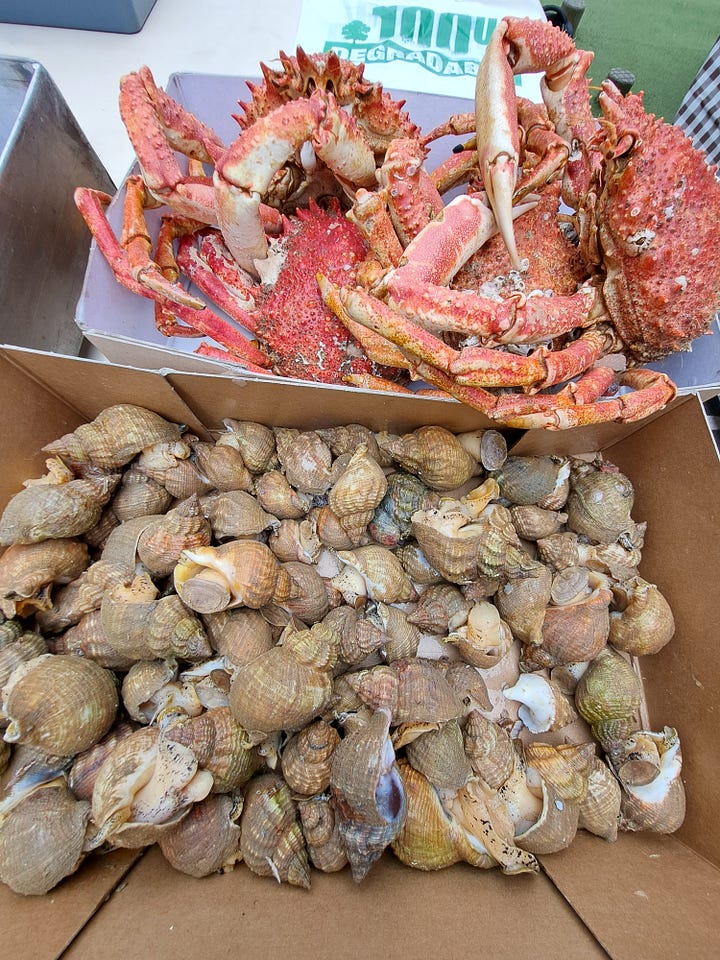
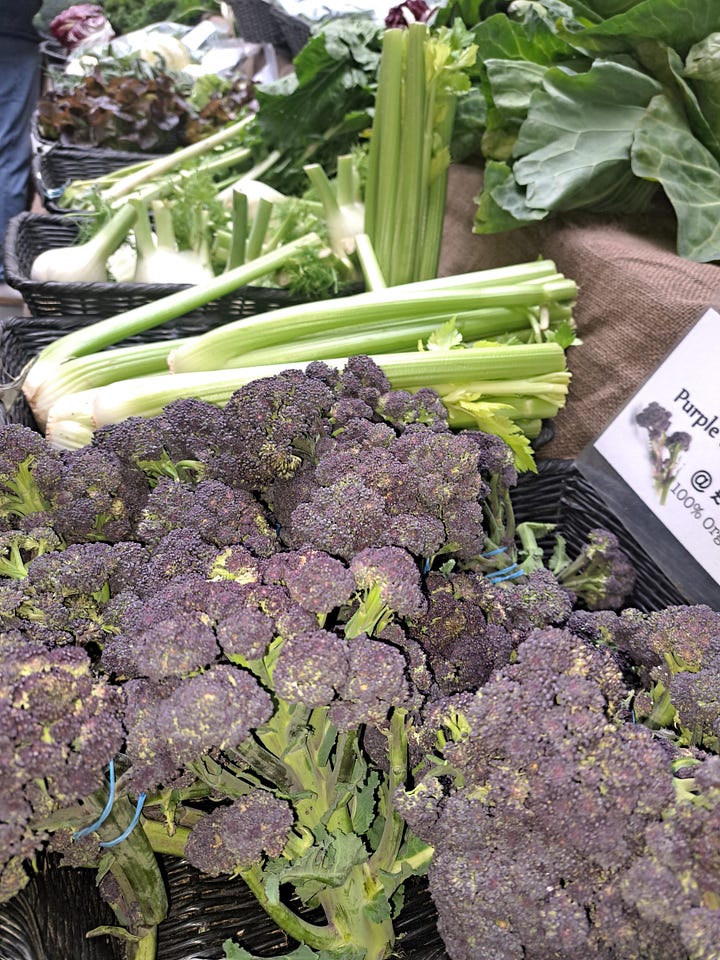
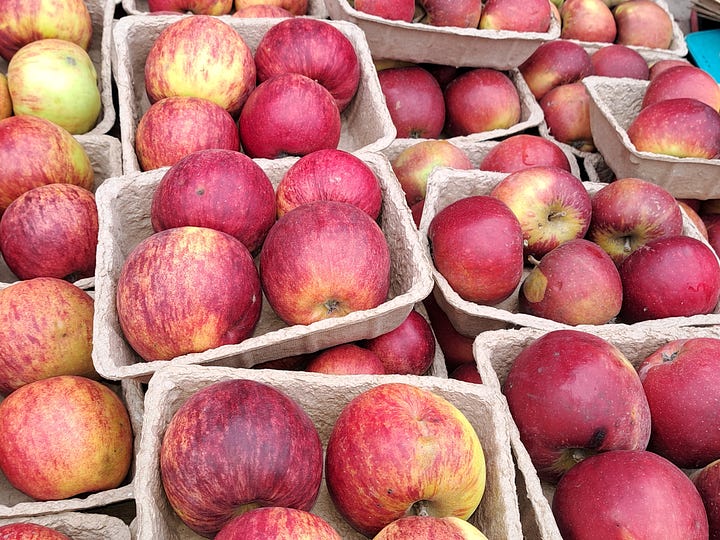

Spider crab and whelks on the fish stall. One customer was buying a lobster and whelks, both ends of the shellfish scale.
Purple sprouting broccoli, Jerusalem artichokes, stored apples. My image of the day; Two children walking around, proudly holding bunches of PSB like bunches of flowers.
Please share with anyone you think might appreciate this piece, and please if you liked it; can you click on the heart!



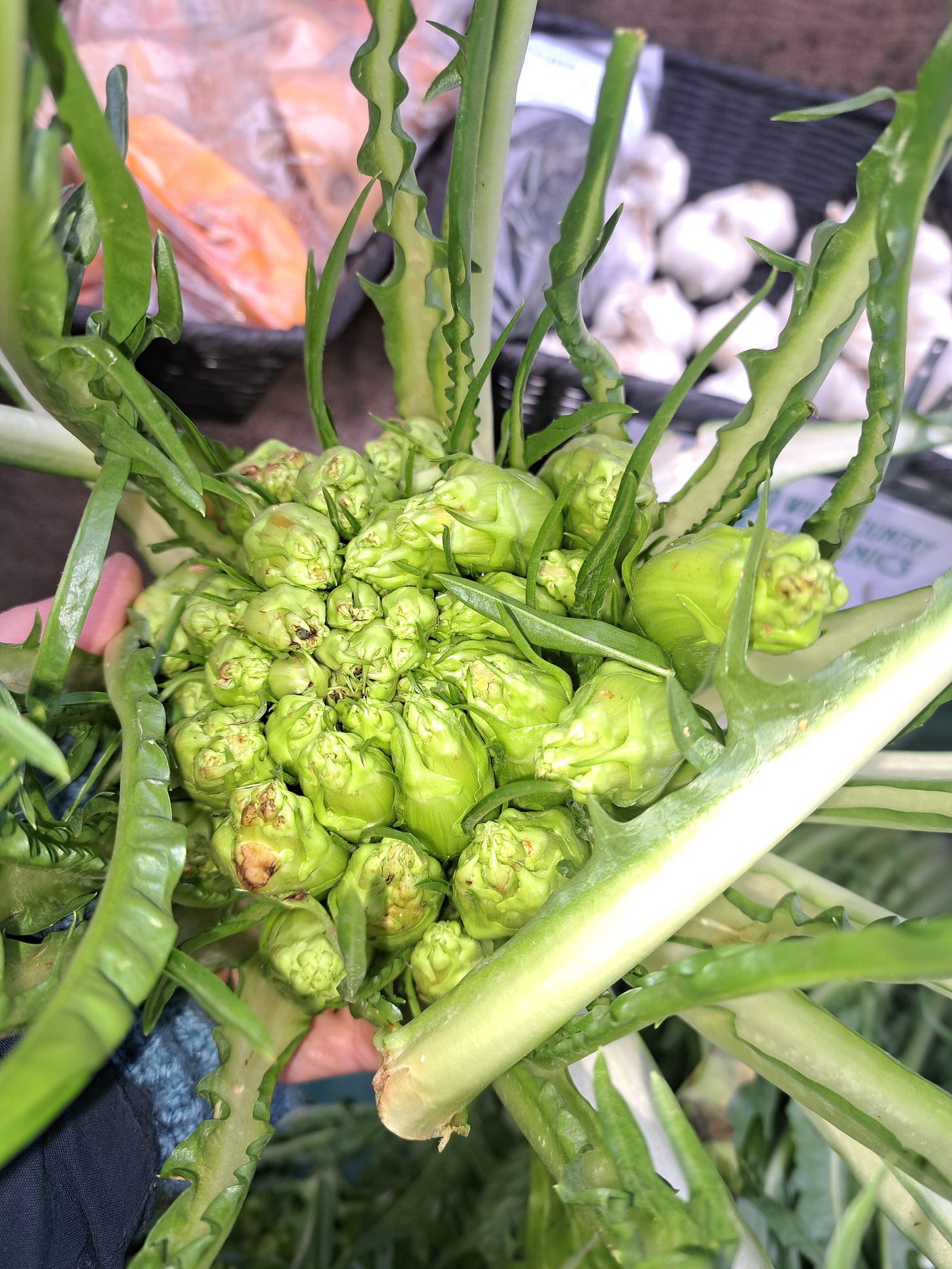
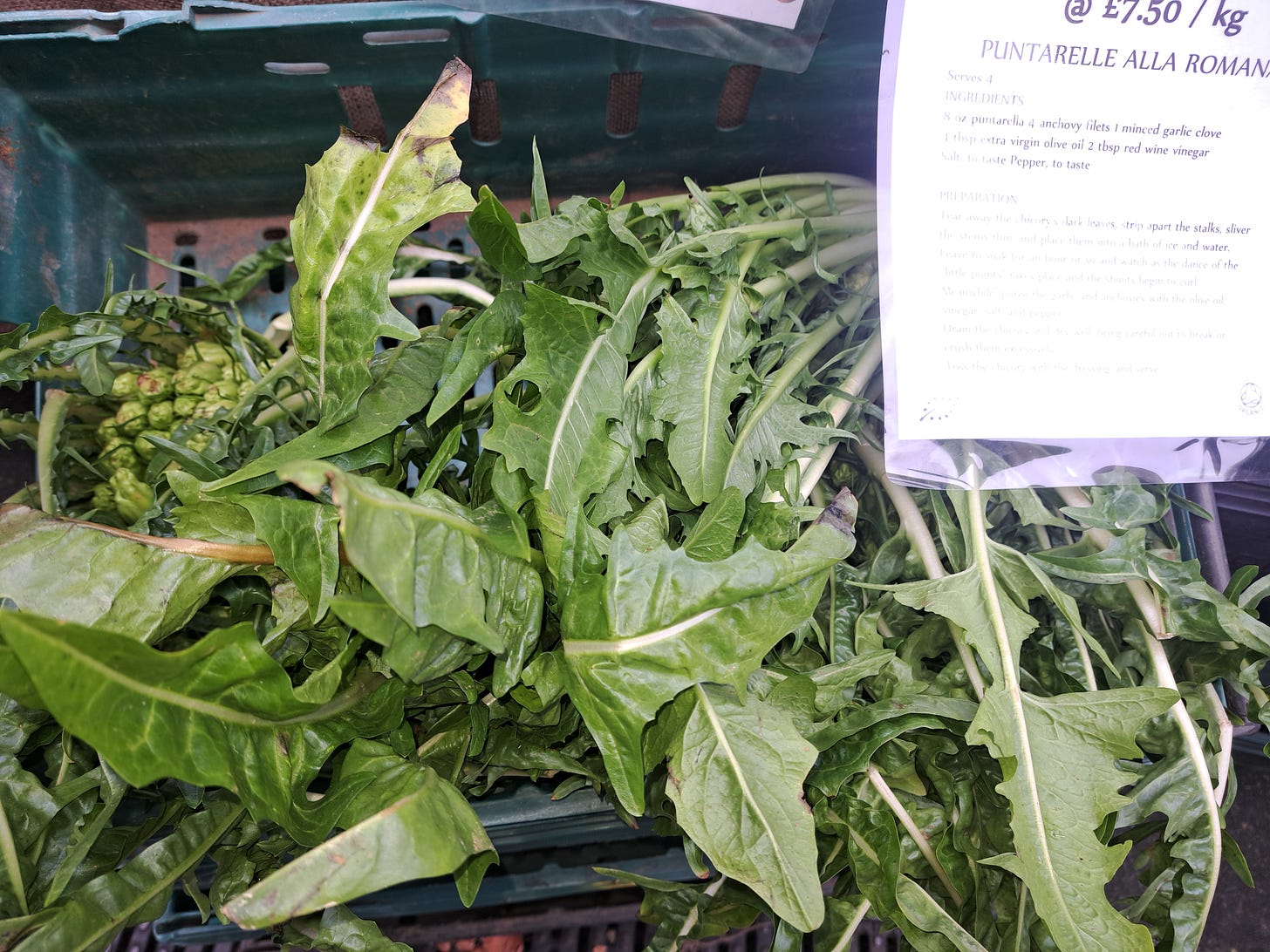
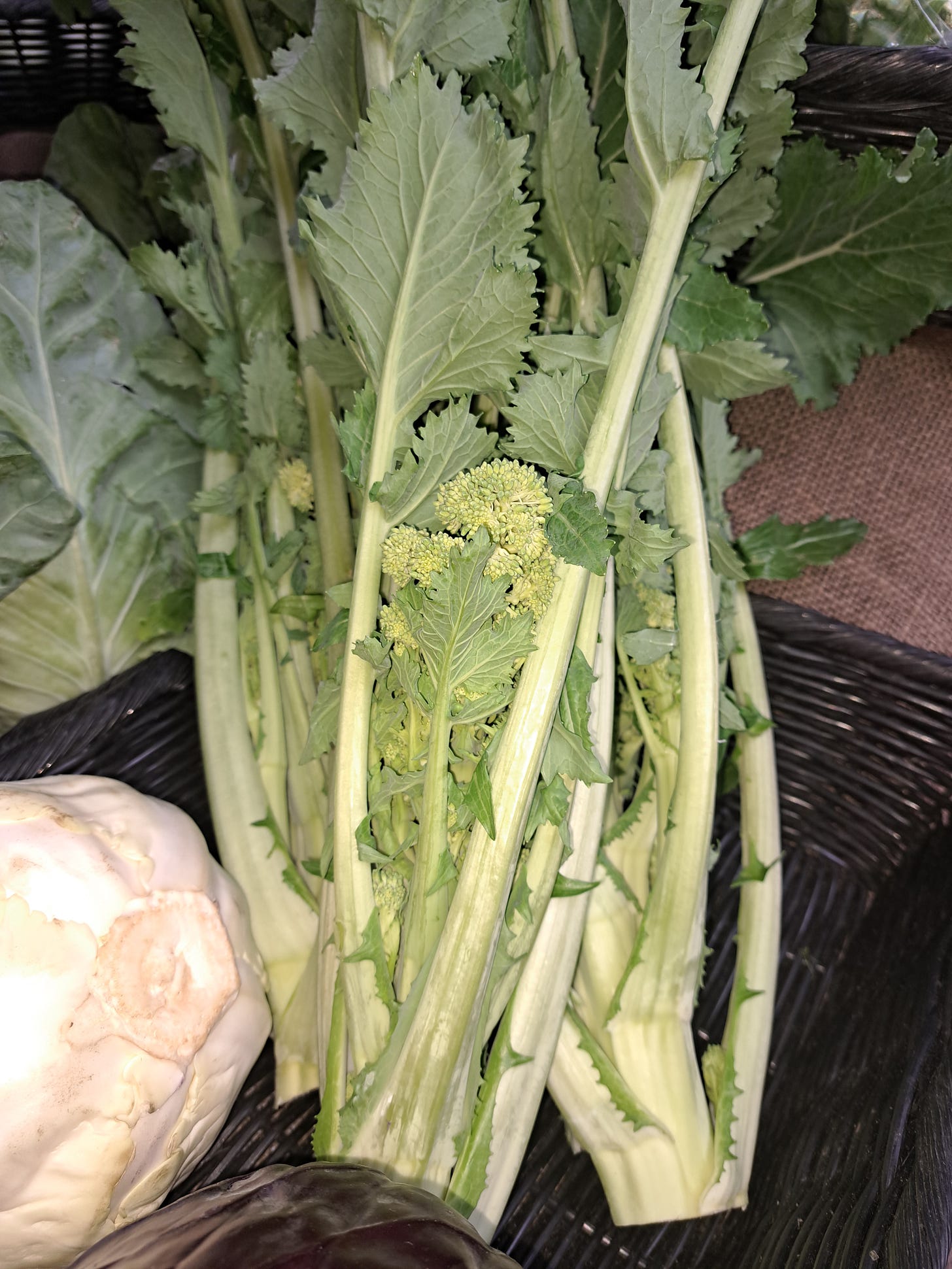
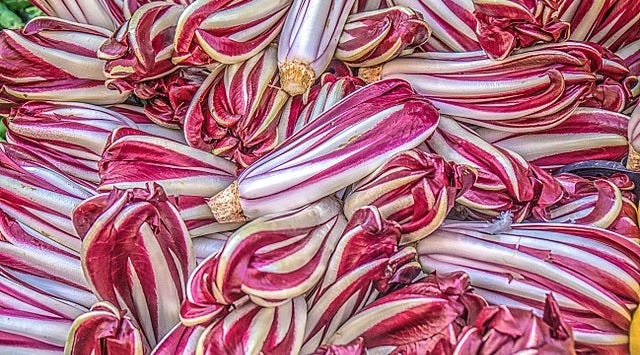

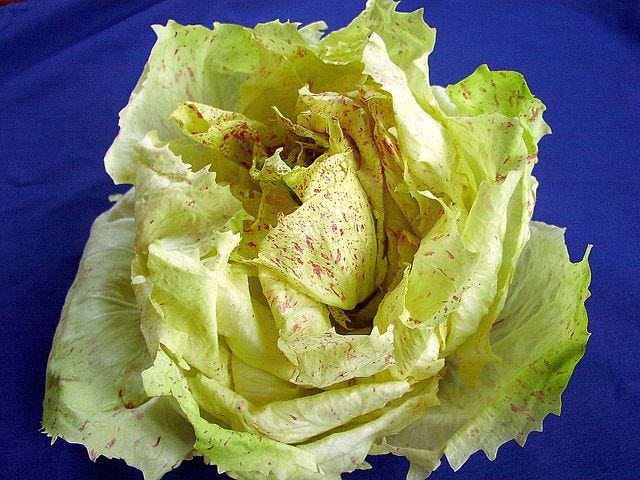
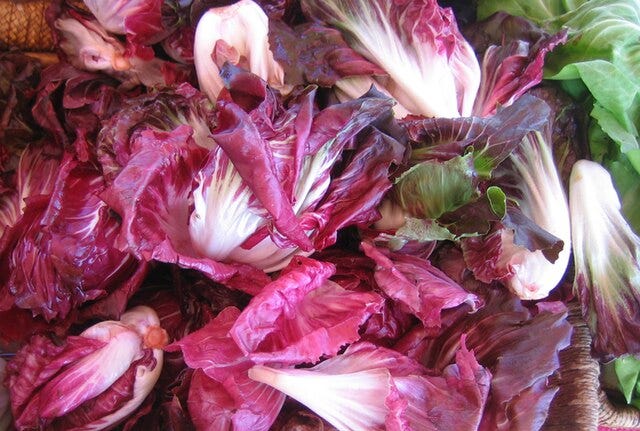
Bitter is tempered by sugar, fat and/or, ironically, acid. That’s why these greens are the stars of winter salads.
We just made and devoured one of my favorite bitter dishes … Sicilian Escarole Pie, a savory pie with wilted escarole, anchovies, olives and golden raisins.
Really useful thank you! A nutritionist friend told me that bitter helps the liver and also improves digestive juices which is why it is good to have in a salad before a main meal.